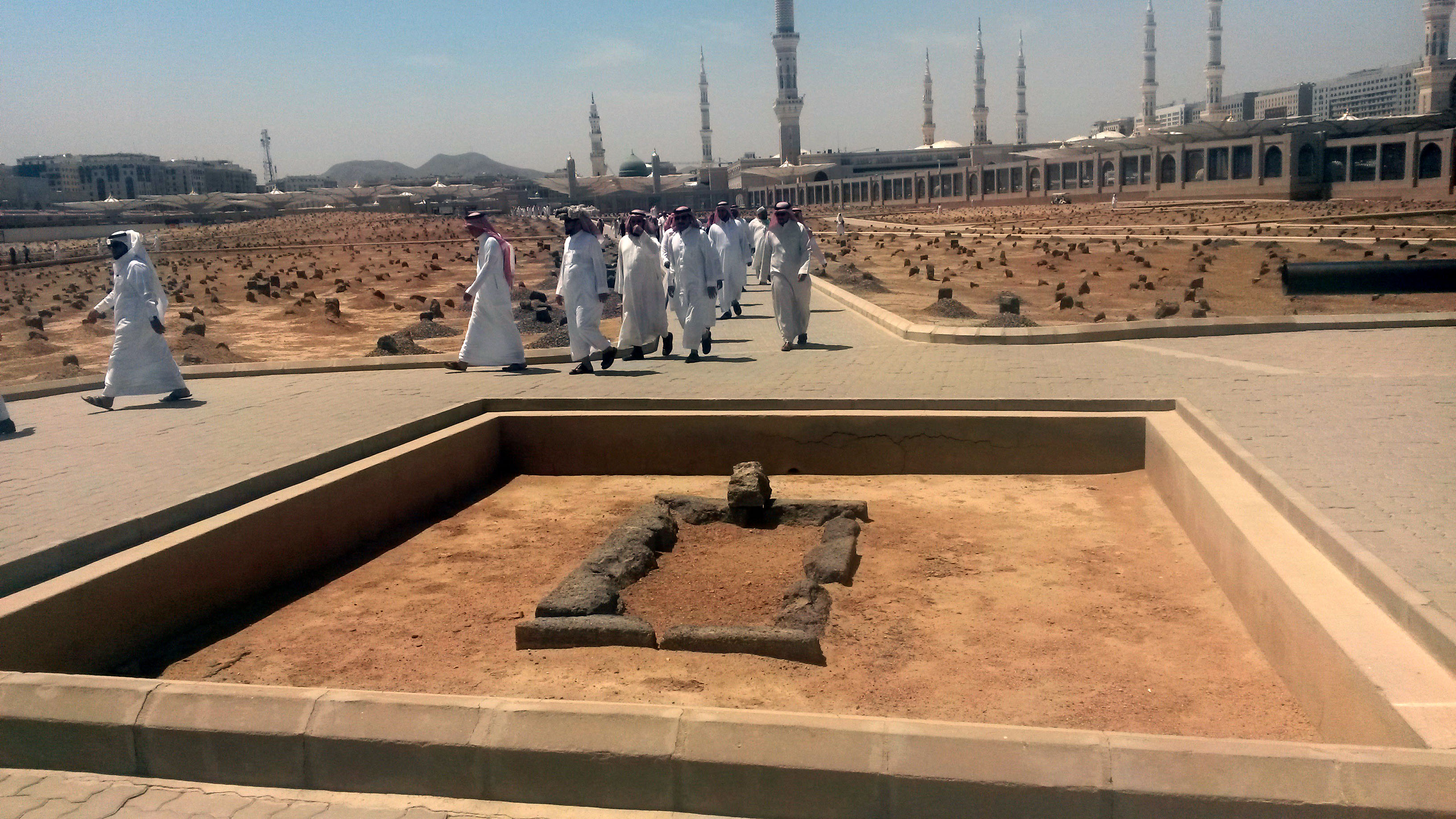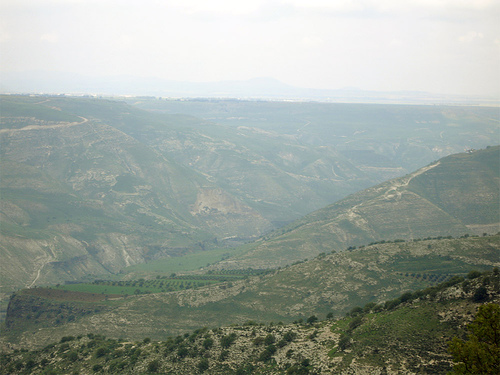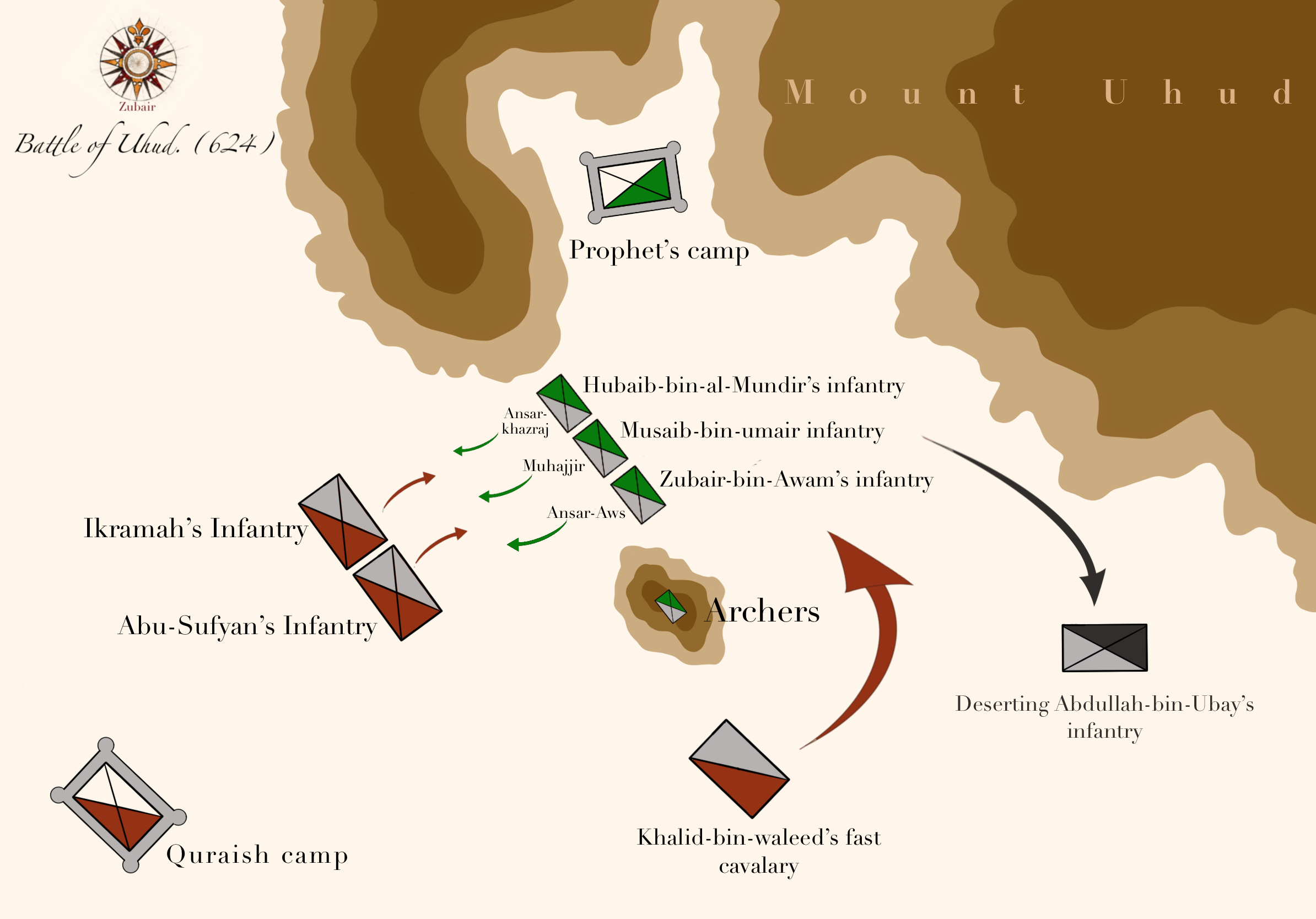|
Rāshidūn Army
The Rashidun army () was the core of the Rashidun Caliphate's armed forces during the early Muslim conquests in the 7th century. The army is reported to have maintained a high level of discipline, strategic prowess and organization, granting them successive victories in their various campaigns. In its time, the Rashidun army was a very powerful and effective force. The three most successful generals of the army were Khalid ibn al-Walid, who conquered Persian Mesopotamia and the Roman Levant, Abu Ubaidah ibn al-Jarrah, who also conquered parts of the Roman Levant, and Amr ibn al-As, who conquered Roman Egypt. The army was a key component in the Rashidun Caliphate's territorial expansion and served as a medium for the early spread of Islam into the territories it conquered. Historical overview According to Tarikh at Tabari, the nucleus of the early caliphate forces were formed from the Green Division (al-Katibah al-Khadra), a unit that consisted of early converts f ... [...More Info...] [...Related Items...] OR: [Wikipedia] [Google] [Baidu] |
Rashidun Caliphate
The Rashidun Caliphate ( ar, اَلْخِلَافَةُ ٱلرَّاشِدَةُ, al-Khilāfah ar-Rāšidah) was the first caliphate to succeed the Islamic prophet Muhammad. It was ruled by the first four successive caliphs of Muhammad after his death in 632 CE (11 Hijri year, AH). During its existence, the empire was the most powerful economic, cultural, and military force in Western Asia, West Asia. The caliphate arose following Muhammad’s passing in June 632 and the subsequent debate over the Succession to Muhammad, succession to his leadership. Muhammad's childhood friend and close companion Abu Bakr (), of the Banu Taym clan, was elected the first caliph in Medina and he began the Early Muslim conquests, conquest of the Arabian Peninsula. His brief reign ended in August 634 when he died and was succeeded by Umar (), his appointed successor from the Banu Adi clan. Under Umar, the caliphate expanded at an unprecedented rate, ruling more than two-thirds of the Byzantine Empir ... [...More Info...] [...Related Items...] OR: [Wikipedia] [Google] [Baidu] |
Uthman
Uthman ibn Affan ( ar, عثمان بن عفان, ʿUthmān ibn ʿAffān; – 17 June 656), also spelled by Colloquial Arabic, Turkish and Persian rendering Osman, was a second cousin, son-in-law and notable companion of the Islamic prophet Muhammad, as well as the third of the '' Rāshidun'', or "Rightly Guided Caliphs". Born into a prominent Meccan clan, Banu Umayya of the Quraysh tribe, he played a major role in early Islamic history, and is known for having ordered the compilation of the standard version of the Quran. When Caliph Umar ibn al-Khattab died in office aged 60/61 years, Uthman, aged 68–71 years, succeeded him and was the oldest to rule as Caliph. Under Uthman's leadership, the Islamic empire expanded into Fars (present-day Iran) in 650, and some areas of Khorāsān (present-day Afghanistan) in 651. The conquest of Armenia had begun by the 640s. His reign also saw widespread protests and unrest that eventually led to armed revolt and his assassination. ... [...More Info...] [...Related Items...] OR: [Wikipedia] [Google] [Baidu] |
Islam
Islam (; ar, ۘالِإسلَام, , ) is an Abrahamic religions, Abrahamic Monotheism#Islam, monotheistic religion centred primarily around the Quran, a religious text considered by Muslims to be the direct word of God in Islam, God (or ''Allah'') as it was revealed to Muhammad, the Muhammad in Islam, main and final Islamic prophet.Peters, F. E. 2009. "Allāh." In , edited by J. L. Esposito. Oxford: Oxford University Press. . (See alsoquick reference) "[T]he Muslims' understanding of Allāh is based...on the Qurʿān's public witness. Allāh is Unique, the Creator, Sovereign, and Judge of mankind. It is Allāh who directs the universe through his direct action on nature and who has guided human history through his prophets, Abraham, with whom he made his covenant, Moses/Moosa, Jesus/Eesa, and Muḥammad, through all of whom he founded his chosen communities, the 'Peoples of the Book.'" It is the Major religious groups, world's second-largest religion behind Christianity, w ... [...More Info...] [...Related Items...] OR: [Wikipedia] [Google] [Baidu] |
Muslim Conquest Of Egypt
The Muslim conquest of Egypt, led by the army of 'Amr ibn al-'As, took place between 639 and 646 AD and was overseen by the Rashidun Caliphate. It ended the seven-century-long period of Roman Egypt, Roman reign over Egypt that began in 30 BC. Byzantine rule in the country had been shaken, as Egypt had been Sasanian conquest of Egypt, conquered and occupied for a decade by the Sasanian Empire in 618–629, before being recovered by the Byzantine emperor Heraclius. The caliphate took advantage of Byzantines' exhaustion and captured Egypt ten years after its reconquest by Heraclius. During the mid-630s, the Romans had already lost the Levant and its Ghassanid allies in Arabia to the Caliphate. The loss of the prosperous province of Egypt and the defeat of the Byzantine armies severely weakened the empire, resulting in further territorial losses in the centuries to come. Background With the death of Muhammad in 632 AD, the Muslim world began a period of rapid expansion. Under the ... [...More Info...] [...Related Items...] OR: [Wikipedia] [Google] [Baidu] |
Amr Ibn Al-As
( ar, عمرو بن العاص السهمي; 664) was the Arab commander who led the Muslim conquest of Egypt and served as its governor in 640–646 and 658–664. The son of a wealthy Qurayshite, Amr embraced Islam in and was assigned important roles in the nascent Muslim community by the Islamic prophet Muhammad. The first caliph Abu Bakr () appointed Amr as a commander of the conquest of Syria. He conquered most of Palestine, to which he was appointed governor, and led the Arabs to decisive victories over the Byzantines at the battles of Ajnadayn and Yarmouk in 634 and 636. Amr launched the conquest of Egypt on his own initiative in late 639, defeating the Byzantines in a string of victories ending with the surrender of Alexandria in 641 or 642. It was the swiftest of the early Muslim conquests. This was followed by westward advances by Amr as far as Tripoli in present-day Libya. In a treaty signed with the Byzantine governor Cyrus, Amr guaranteed the security of Eg ... [...More Info...] [...Related Items...] OR: [Wikipedia] [Google] [Baidu] |
Muslim Conquest Of The Levant
The Muslim conquest of the Levant ( ar, فَتْحُ الشَّام, translit=Feth eş-Şâm), also known as the Rashidun conquest of Syria, occurred in the first half of the 7th century, shortly after the rise of Islam."Syria." Encyclopædia Britannica. 2006. Encyclopædia Britannica Online. 20 October 200Syria – Britannica Online Encyclopedia/ref> As part of the larger military campaign known as the early Muslim conquests, the Levant was brought under the rule of the Rashidun Caliphate and developed into the provincial region of Bilad al-Sham. The presence of Arab Muslim troops on the southern Levantine borders of the Byzantine Empire had occurred during the lifetime of Muhammad, with the Battle of Muʿtah in 629 formally marking the start of the Arab–Byzantine wars. However, the actual conquest did not begin until 634, two years after Muhammad's death. It was led by the first two Rashidun caliphs who succeeded Muhammad: Abu Bakr and Umar ibn al-Khattab. During this time, ... [...More Info...] [...Related Items...] OR: [Wikipedia] [Google] [Baidu] |
Muslim Conquest Of Persia
The Muslim conquest of Persia, also known as the Arab conquest of Iran, was carried out by the Rashidun Caliphate from 633 to 654 AD and led to the fall of the Sasanian Empire as well as the eventual decline of the Zoroastrian religion. The rise of the Muslims in Arabia coincided with an unprecedented political, social, economic, and military weakness in Persia. Once a major world power, the Sasanian Empire had exhausted its human and material resources after decades of warfare against the Byzantine Empire. The Sasanian state's internal political situation quickly deteriorated after the execution of King Khosrow II in 628. Subsequently, ten new claimants were enthroned within the next four years.The Muslim Conquest of Persia By A.I. Akram. Ch: 1 Following the Sasanian civil war of 628–632, the empire was no longer centralized. Arab Muslims first attacked Sasanian territory in 633, when Khalid ibn al-Walid invaded Mesopotamia (then known as the Sasanian province of '' ... [...More Info...] [...Related Items...] OR: [Wikipedia] [Google] [Baidu] |
Khalid Ibn Al-Walid
Khalid ibn al-Walid ibn al-Mughira al-Makhzumi (; died 642) was a 7th-century Arab military commander. He initially headed campaigns against Muhammad on behalf of the Quraysh. He later became a Muslim and spent the remainder of his career in service to Muhammad and the first two Rashidun successors: Abu Bakr and Umar. Following the establishment of the Rashidun Caliphate, Khalid held a senior command in the Rashidun army; he played the leading role in the Ridda Wars against rebel tribes in Arabia in 632–633, the initial campaigns in Sasanian Iraq in 633–634, and the conquest of Byzantine Syria in 634–638. As a horseman of the Quraysh's aristocratic Banu Makhzum, which ardently opposed Muhammad, Khalid played an instrumental role in defeating Muhammad and his followers during the Battle of Uhud in 625. In 627 or 629, he converted to Islam in the presence of Muhammad, who inducted him as an official military commander among the Muslims and gave him the title of (). Duri ... [...More Info...] [...Related Items...] OR: [Wikipedia] [Google] [Baidu] |
Early Muslim Conquests
The early Muslim conquests or early Islamic conquests ( ar, الْفُتُوحَاتُ الإسْلَامِيَّة, ), also referred to as the Arab conquests, were initiated in the 7th century by Muhammad, the main Islamic prophet. He established a new unified polity in Arabia that expanded rapidly under the Rashidun Caliphate and the Umayyad Caliphate, culminating in Islamic rule being established across three continents. According to Scottish historian James Buchan: "In speed and extent, the first Arab conquests were matched only by those of Alexander the Great, and they were more lasting." At their height, the territory that was conquered stretched from Iberia (at the Pyrenees) in the west to India (at Sind) in the east; Muslim rule spanned Sicily, most of North Africa and the Middle East, and the Caucasus and Central Asia. English historian Edward Gibbon writes in ''The History of the Decline and Fall of the Roman Empire'': Among other drastic changes, the early Musl ... [...More Info...] [...Related Items...] OR: [Wikipedia] [Google] [Baidu] |
Amr Ibn Al-'As
( ar, عمرو بن العاص السهمي; 664) was the Arab commander who led the Muslim conquest of Egypt and served as its governor in 640–646 and 658–664. The son of a wealthy Qurayshite, Amr embraced Islam in and was assigned important roles in the nascent Muslim community by the Islamic prophet Muhammad. The first caliph Abu Bakr () appointed Amr as a commander of the conquest of Syria. He conquered most of Palestine, to which he was appointed governor, and led the Arabs to decisive victories over the Byzantines at the battles of Ajnadayn and Yarmouk in 634 and 636. Amr launched the conquest of Egypt on his own initiative in late 639, defeating the Byzantines in a string of victories ending with the surrender of Alexandria in 641 or 642. It was the swiftest of the early Muslim conquests. This was followed by westward advances by Amr as far as Tripoli in present-day Libya. In a treaty signed with the Byzantine governor Cyrus, Amr guaranteed the security o ... [...More Info...] [...Related Items...] OR: [Wikipedia] [Google] [Baidu] |
Mu'adh Ibn Jabal
Muʿādh ibn Jabal ( ar, مُعاذ بن جبل; 605 – 639) was a sahabi (companion) of the Islamic prophet Muhammad. Muadh was an '' Ansar'' of Banu Khazraj and compiled the Quran with five companions while Muhammad was still alive. He was known as the one with a lot of knowledge. He was called by Muhammad "the one who will lead the scholars into Paradise."Islamiat for students Biography Era of Muhammad Mu'adh accepted Islam before the Second pledge at al-Aqabah in submission before Muhammad. Nevertheless, he was one of those who took the pledge. He was a great companion Muhammad sent Mu'adh as the governor of Yemen to collect zakat. When Muhammad sent Mu'adh to Yemen to teach its people about Islam, he personally bade farewell to him, walking for some distance alongside him as he set out to leave the city. It is said that Muhammad informed him that on his return to Medina, he would perhaps see only his masjid and grave. Upon hearing this, Mu'adh began to cry. After Muhamm ... [...More Info...] [...Related Items...] OR: [Wikipedia] [Google] [Baidu] |
Sa'd Ibn Abi Waqqas
, image = File:Saad ibn Abi Waqqas Masjid an-Nabawi Calligraphy.png , alt = , caption = His name in Arabic calligraphy , birth_date = , death_date = , birth_place = Mecca, Hejaz, Arabia , death_place = Medina, Hejaz , placeofburial = Al-Baqi Cemetery, Medina , allegiance = Muhammad (610–632) Rashidun Caliphate (632–644) , branch = Rashidun army , serviceyears = 624–644 , rank = , unit = , commands = , battles = *Under Muhammad: **Battle of Badr (624) **Battle of Uhud (625) ** Battle of the Trench (627) ** Battle of Khaybar (629) **Battle of Hunayn (630) **Battle of Autas (630) **Ridda Wars *** Battle of Zhuqissa (632) *** Battle of Aqraba (633) **Muslim conquest of Persia ***Battle of al-Qadisiyyah (636) ***Battle of Burs (636) *** Battle of Babylon (636) *** Battle of Ctesiphon (637) ***Battle of Nahavand (642) , spouse = Salma bint KhasafahMakhita bint Amr , children ... [...More Info...] [...Related Items...] OR: [Wikipedia] [Google] [Baidu] |


.jpg)


.png)

